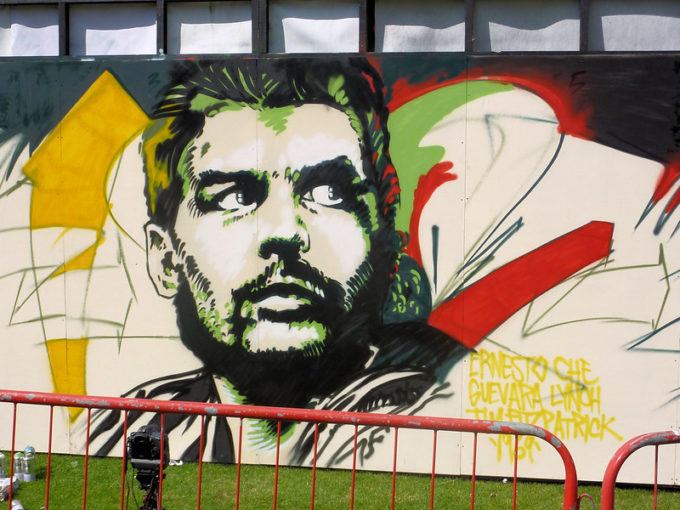by JONAH RASKIN

If Che Guevara were alive today he would be 93. Too old to be the kind of guerrilla he had been in Cuba, the Congo and Bolivia, where he was killed on 9 October 1967 by Mario Teran, a 27-year-old military officer who shot him 9 times, presumably not just to kill him but to inflict pain and suffering. Teran and the Bolivian military had the help of the CIA, which had been tracking and tracing Guevara’s movements for years, as he knew. There was no way Che could hide from the CIA. The agency kept track of flights and passengers and the kinds of purchases guerrillas would make to camp in a jungle and launch attacks on soldiers who were well trained and in the service of a repressive regime. Che didn’t blame the CIA. Instead, he blamed “imperialism” and explained that it had “power over all the airline companies and airports” and monitored “the purchase of unusual quantities of backpacks, nylon sheeting, knives, blankets, etc.” He wasn’t up against a “paper tiger.”
Soon after news of his death was announced, Che became an overnight revolutionary icon, though he was already headed in that direction. I remember seeing his image everywhere, especially in buses and taxis, when I lived in Mexico in 1975. Che is still an iconic figure, though his image has been tarnished in part by his all-too-honest account of the seven months in 1965 when he failed to foment a revolution in the Congo, not far from the shores of Lake Tanganyika, which, he explained, constantly “tempted” him and offer an escape route to friendly Tanzania. Doomed from the start, the expedition seems to have been the beginning of the end for Che who wrote, “During those last hours of our time in the Congo I felt alone.” He added “never have I felt myself so alone.”
Call the Congo, Che’s “Heart of Darkness,” the place where he confronted his own inner demons and was undone by them. Too embarrassed to return to Cuba immediately after the military defeat of the guerrilla army he had assembled, he spent six months living clandestinely at the Cuban Embassy in Dar es Salaam and at a “safe house” in Prague, evading would-be assassins.
Granted, Che was no Mr. Kurtz, the imperialist villain in Joseph Conrad’s novella Heart of Darkness who wants to bring civilization to the natives in the Congo, but loses faith, exclaims, “Exterminate the brutes” and carries out a policy of genocide. Still, like Kurtz, Che was disillusioned in the Congo. It wasn’t civilization he wanted to bring to the nation, but revolution and socialism.
Counterpunch for more